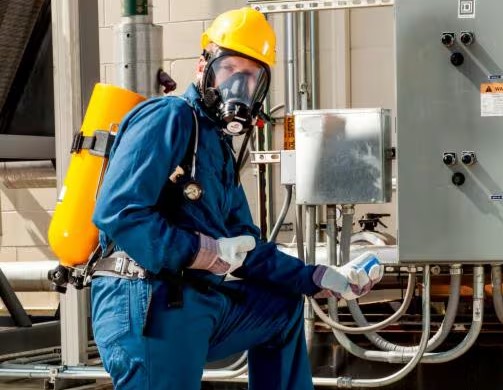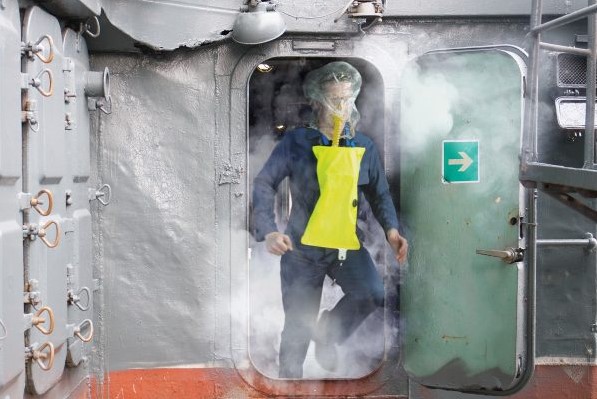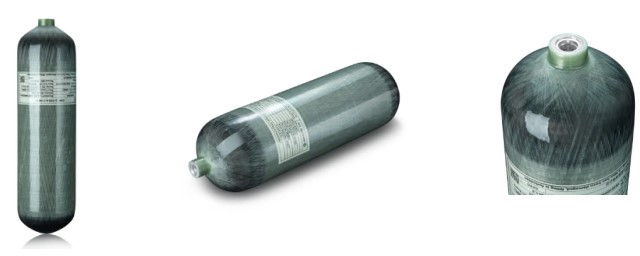Introduction
Chemical spills and leaks pose serious risks to human health and the environment. Responders, including firefighters, hazardous materials (HAZMAT) teams, and industrial safety personnel, rely on self-contained breathing apparatus (SCBA) to operate safely in contaminated areas. Among SCBA components, the high-pressure air cylinders play a crucial role in ensuring an adequate air supply. Carbon fiber composite cylinders have become the preferred choice due to their lightweight, high strength, and superior durability. This article explores how carbon fiber SCBA cylinders improve emergency response efficiency in chemical spill situations.
Why SCBA Is Essential in Chemical Spill Response
During a chemical spill or gas leak, airborne contaminants, including toxic vapors and particulate matter, can make the surrounding air unsafe to breathe. SCBA provides an independent air supply, allowing emergency responders to work safely in hazardous environments. These breathing systems are crucial in situations where:
-
Airborne toxins exceed safe levels.
-
Oxygen concentration drops below breathable levels.
-
Workers need to enter confined or contaminated spaces.
-
Extended rescue and containment operations require sustained protection.
The Advantages of Carbon Fiber SCBA Cylinders
Carbon fiber composite SCBA cylinders have largely replaced older steel and aluminum cylinders. Their benefits include:
-
Weight Reduction for Better Mobility
Carbon fiber cylinders are significantly lighter than traditional metal cylinders. This allows emergency responders to move faster and with less fatigue, especially in time-sensitive operations. A lighter air pack improves endurance and reduces strain, which is essential in high-risk environments. -
Higher Air Capacity Without Added Bulk
Despite being lightweight, carbon fiber SCBA cylinders can store air at high pressures (often 4,500 psi or higher). This means they provide longer air supply durations without increasing cylinder size, giving responders more time to complete tasks before refilling. -
Durability and Impact Resistance
Carbon fiber composite materials are engineered for high impact resistance. Chemical spill response often involves navigating rough terrain, confined spaces, or unstable environments. The durability of these cylinders reduces the risk of damage, ensuring continuous airflow and operational safety. -
Corrosion Resistance for Longevity
Traditional metal cylinders can corrode over time, especially in environments where exposure to chemicals, moisture, and extreme temperatures is frequent. Carbon fiber cylinders, with their composite structure, resist corrosion and degradation, leading to a longer lifespan and lower maintenance costs.
How Carbon Fiber SCBA Cylinders Improve Chemical Spill Response
1. Faster and More Efficient Response
When dealing with a hazardous spill, time is critical. Carbon fiber SCBA cylinders allow emergency teams to carry their breathing apparatus more comfortably and move efficiently. The reduced weight also means they can carry additional equipment or supplies, improving overall response effectiveness.
2. Extended Operational Time in Hazardous Environments
Since carbon fiber SCBA cylinders can store air at higher pressures, responders can stay in the hazardous area longer before needing to exit and replace their air supply. This extended operational time is crucial for:
-
Identifying and containing the spill source.
-
Performing rescue operations.
-
Conducting damage assessments.
3. Safety in High-Risk Conditions
Chemical spills often involve volatile or reactive substances. A strong, impact-resistant cylinder ensures that accidental drops, collisions, or environmental factors do not compromise air supply integrity. This prevents sudden air loss, which could be life-threatening in a contaminated area.
4. Reduced Fatigue for Improved Decision-Making
Long emergency operations demand sustained physical and mental effort. Heavy equipment adds to fatigue, which can impair decision-making and response efficiency. By using lighter SCBA cylinders, responders experience less exhaustion, allowing them to remain focused on their tasks.
Best Practices for Maintaining Carbon Fiber SCBA Cylinders
To maximize safety and reliability, proper maintenance of SCBA cylinders is essential. Best practices include:
-
Regular Inspections: Check for cracks, impact damage, or surface wear before and after each use.
-
Proper Storage: Store cylinders in a cool, dry environment away from direct sunlight and chemicals to prevent material degradation.
-
Scheduled Hydrostatic Testing: Ensure periodic pressure testing (as per manufacturer and regulatory guidelines) to verify cylinder integrity.
-
Air Quality Checks: Use only certified, clean compressed air to prevent contamination.
-
Valve and Regulator Maintenance: Keep valves and regulators in good condition to ensure proper airflow and prevent leaks.
Conclusion
Carbon fiber SCBA cylinders have transformed emergency response operations by providing a lightweight, high-capacity, and durable solution for breathing protection. Their advantages in chemical spill and gas leak scenarios help improve mobility, extend operational time, and enhance overall safety for emergency responders. Proper maintenance and regular inspections further ensure reliability, making these cylinders a critical tool for hazardous material response teams worldwide.
By integrating advanced carbon fiber SCBA technology into emergency preparedness plans, response teams can operate more effectively and safely in high-risk chemical spill situations, protecting both human lives and the environment.
Post time: Mar-26-2025



